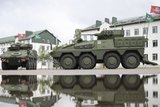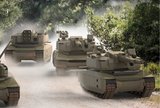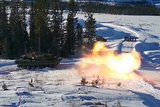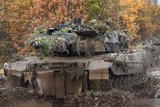Lockheed Martin conducts validation testing on the advanced ruggedized HULC robotic exoskeleton
Lockheed Martin recently began laboratory testing of an improved next-generation design of its HULC advanced robotic exoskeleton. The testing brings HULC a step closer to readiness to support troops on the ground and others who must carry heavy loads.
HULC is an untethered, battery powered, hydraulic-actuated anthropomorphic exoskeleton capable of performing deep squats, crawls and upper-body lifting with minimal human exertion. It is designed to transfer the weight from heavy loads to the ground through the robotic legs of the lower-body exoskeleton, taking the weight off of the operator. An advanced onboard micro-computer ensures the exoskeleton moves in concert with the operator.
The ruggedized HULC system incorporates multiple design changes to increase reliability and performance in operational environments. New environmental sealing and packaging give the system's electronics increased protection from natural elements and battlefield hazards. Lockheed Martin also leveraged commonly-used, military-standard rechargeable batteries to increase operational run time.
The testing now under way will validate the ruggedized system's capabilities and reliability in a variety of simulated battlefield conditions. "Each of Lockheed Martin's enhancements to the ruggedized HULC design was carefully planned to maintain peak system performance and alleviate physical burdens that can hinder the user's mission success," said Rich Russell, director of Sensors, Data Links and Advanced Programs at Lockheed Martin Missiles and Fire Control. "The design improvements we implemented on the ruggedized exoskeleton prove our commitment to providing the Warfighter with an innovative solution that improves endurance and reduces the risk of injury."
Source: Lockheed Martin
Follow Shephard News on Twitter
























